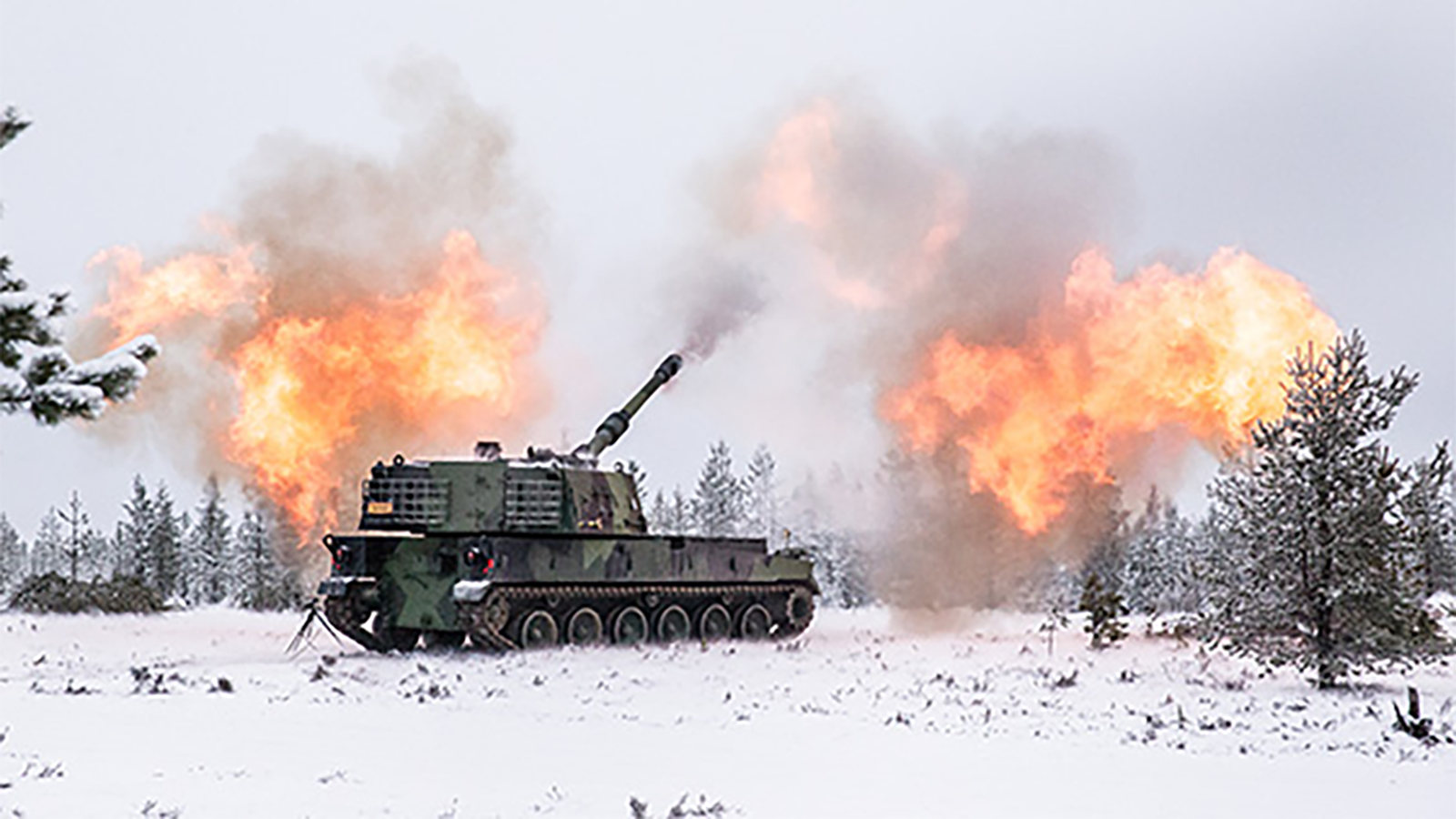
DUBLIN — The Norwegian Defense Material Agency (NDMA) signed off today an option with partner Hanwha Defense of South Korea for delivery of an additional four K9 Thunder 155mm self-propelled howitzers and eight more K10 ammunition resupply vehicles.
The option being exercised falls within an original 1.8 billion kroner ($180 million) contract struck between the two parties in 2017 and increases Oslo’s full K9 order to 28 systems. Similarly, procurement of K10, the supporting automated robotic unit of the K9, will rise to a total of 14 vehicles.
All deliveries are expected to take place within the next two years, according to a NDMA public affairs spokesperson.
Oslo’s decision follows Poland and Hanwha agreeing on a $2.4 billion K9 deal in August — the largest export contract for the artillery system that has also been ordered by Hanwha’s home country of South Korea as well as Turkey, India, Finland, Estonia, Australia and Egypt.
The strengthening of Norway’s artillery firepower arrives in advance of a key decision expected before the end of 2022 for acquisition of a new Main Battle Tank (MBT), a contract competition between Germany’s Krauss-Maffei Wegmann, offering the Leopard 2A7, and South Korea’s Hyundai Rotem pitching the K2 Black Panther.
“Both manufacturers have delivered offers with the vehicles involved in cold winter tests in Norway last year,” the NDMA spokesperson said of the MBT competition. “It has been a thorough process so far.”

Modern Tech in Indo-Pacific Operations
Explore how networked warfare, AI, and 3D-printed drones are reshaping US Indo-Pacific strategy.
He also estimated the new MBT contract to be worth around $1-2 billion, with the Norwegian Army requirement set at 72 vehicles. Entry to service has been planned for 2025, coinciding with Leopard L2A4 retirement.
Norway plans on further increasing land capabilities through the acquisition of additional Infantry Fighting Vehicles (IFV) ahead of the army standing up a fourth mechanized battalion, though it’s unclear exactly what type of vehicle that will be.
“Rather than simply ordering more CV-90 IFVs [already operated by Norway] the government will conduct groundwork to assess whether other options are best or buy additional CV-90s,” said the NDMA spokesperson.
The government is expected to make a recommendation on “how to move forward” with the IFV program before the end of the year, with a procurement phase potentially starting at the end of 2024, confirmed the spokesperson.
“A [request for information] was developed before the summer, with an internal evaluation being developed now,” he added.
Much interest also surrounds investment in a long range precision fires program, but procurement approval by Oslo will only be reached once NDMA carries out key activities such as market research and cost analysis.
“At that point, it will then be up to the government to make a prioritization decision or we could see an invitation to tender occur late 2023 or 2024,” added the NDMA spokesperson.
Norway’s latest future defense acquisitions document, published in April 2022, states that introduction of a new long range precision fire system is planned for 2029.
In an Oct. 11 interview with Breaking Defense, both Maj. Gen. Lars Lervik, the top Norwegian Army officer, and his Swedish counterpart Maj. Gen. Karl Engelbrektson, were unequivocal about investment in long-range fires. Lervik stated, “It’s about having range and precision, but it’s also about having volume. So that’s the trade off, at least we are looking at, you need to have some systems that can reach out, but we also need to have the volume to stay in the close fight.”
Norway’s progress with land based acquisitions is looked upon as critical to deterring or countering Russian aggression, especially within the context of the two countries sharing a 198Km border in the Arctic.